You are here
Following the 1980 eruption of Mount St. Helens, biologists were fearful that the power and heat of the blast was enough to sterilize everything in its wake. Despite the doubts, 34 years later the blast zone is on the mend and harboring life in unexpected profusion. Even at the epicenter in the crater of St. Helens, an unexpected transformation is taking place: the birth of a glacier. Crater Glacier, often in the shadow of the new crater walls, is on the move and represents one of the planet's only healthy, advancing bodies of ice. 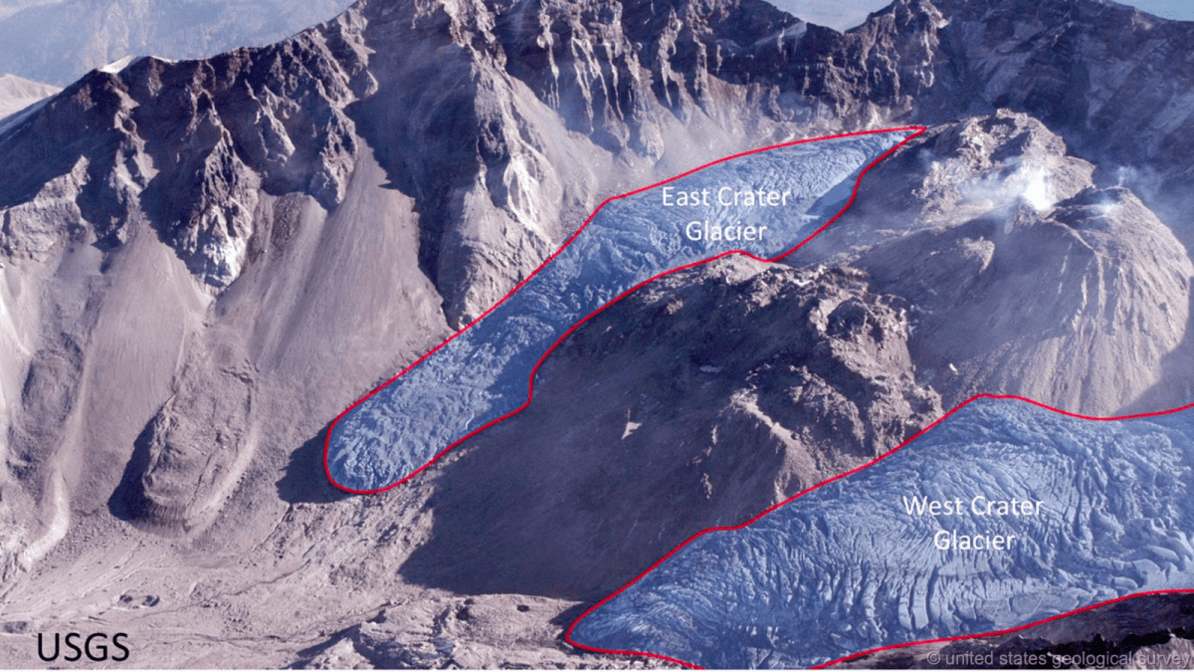
First noticed only a few years after the eruption, the telltale signs of glacial advance (cracks and crevasses in the surface of the annual snow) began to take form. Due to a combination of frequent avalanche and debris fall onto the crater floor and long months of protections from the sun due to its northern exposure and heavy rock load, Crater Glacier has been growing at rates ranging from a consistent 4 inches per day to as much as 1 to 2 feet per day.
Compounding Crater Glacier's growth was an impressive lava dome-building event from late 2004 to early 2005. During this time a fin of rock emerged from the mountain's core and pushed the glacier against the south wall of the crater. This helped to thicken the ice mass and assisted its rate of flow by increasing it's grade. In this counterintuitive sequence of events, the growth of the lava dome not only failed to diminish Crater Glacier's size (particularly due to its insulating layer of rock), it actually assisted the glacier's progress down the slope.
By 2008 the east and west rims of Crater Glacier had joined, encircling the growing lava dome. To this day they continue their downhill march together. From this combination of fire and ice has emerged a laboratory for glacial dynamics. During a 2012 flight over the crater, a gaping hole was noticed in the middle of the ice field. Unlike most glacier caves that are horizontally oriented features formed by the melt water flowing and eroding a tunnel along the glacier's base, geothermal activity below Crater Glacier has formed vertically oriented caves as a result of hot steam gas rising through sections of the ice that overlay geothermal vents. 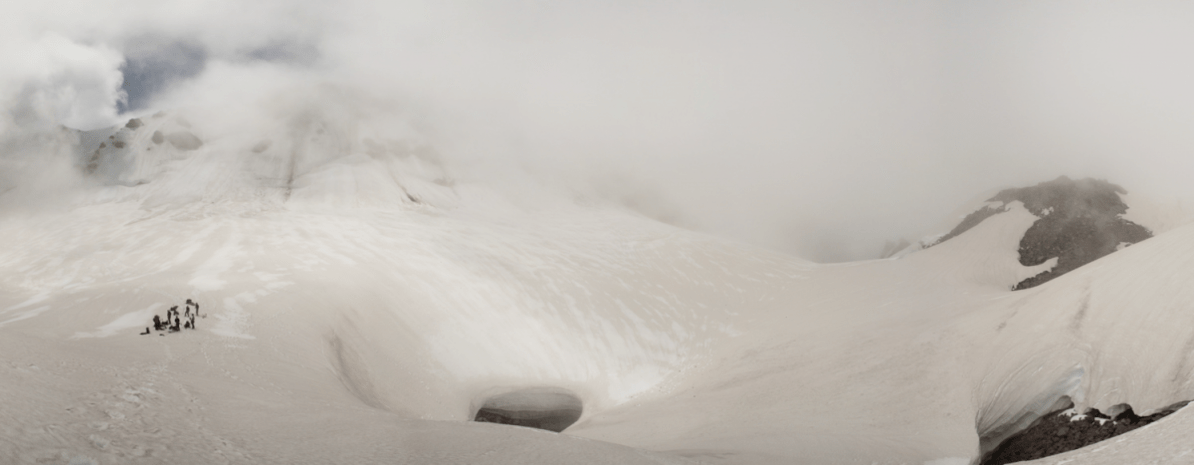
In June, 2014, a team of cavers, researchers, and surveyors were granted permission to explore, map, and survey the cave system within Crater Glacier. It had been 13 years since scientist Charles Anderson conducted a similar survey. From the 1980s until 2001 Anderson and his team returned to the crater annually to monitor the growth of our country's youngest glacier and associated caves. The goal of the current mission is to pick up where Anderson left off, to see how the cave system continues to change from year to year, and to document any curiosities associated with the ice.
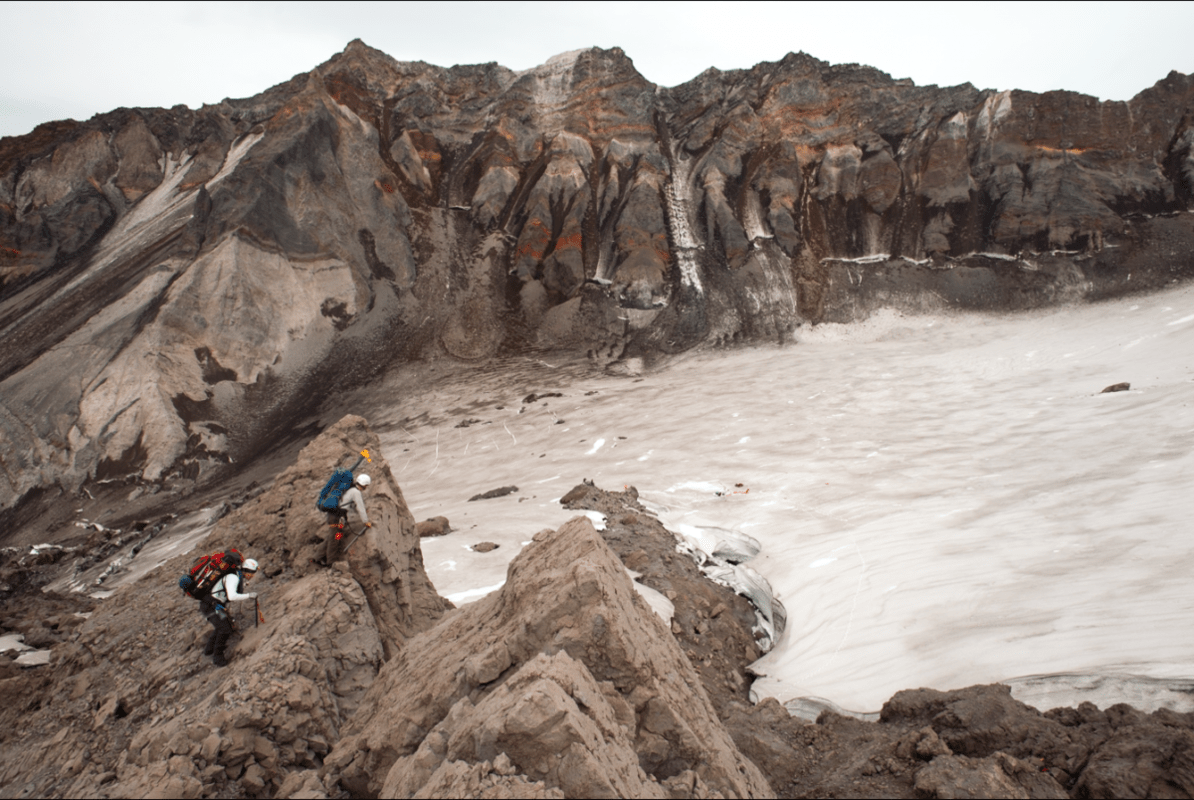
One of the goals of the expedition was to enter and explore the massive pit discovered by the USGS. Dubbed "Godzilla Hole," this feature had never been entered before, and, according to team leader, Eddy Cartaya, it "was vastly more immense than any had expected."
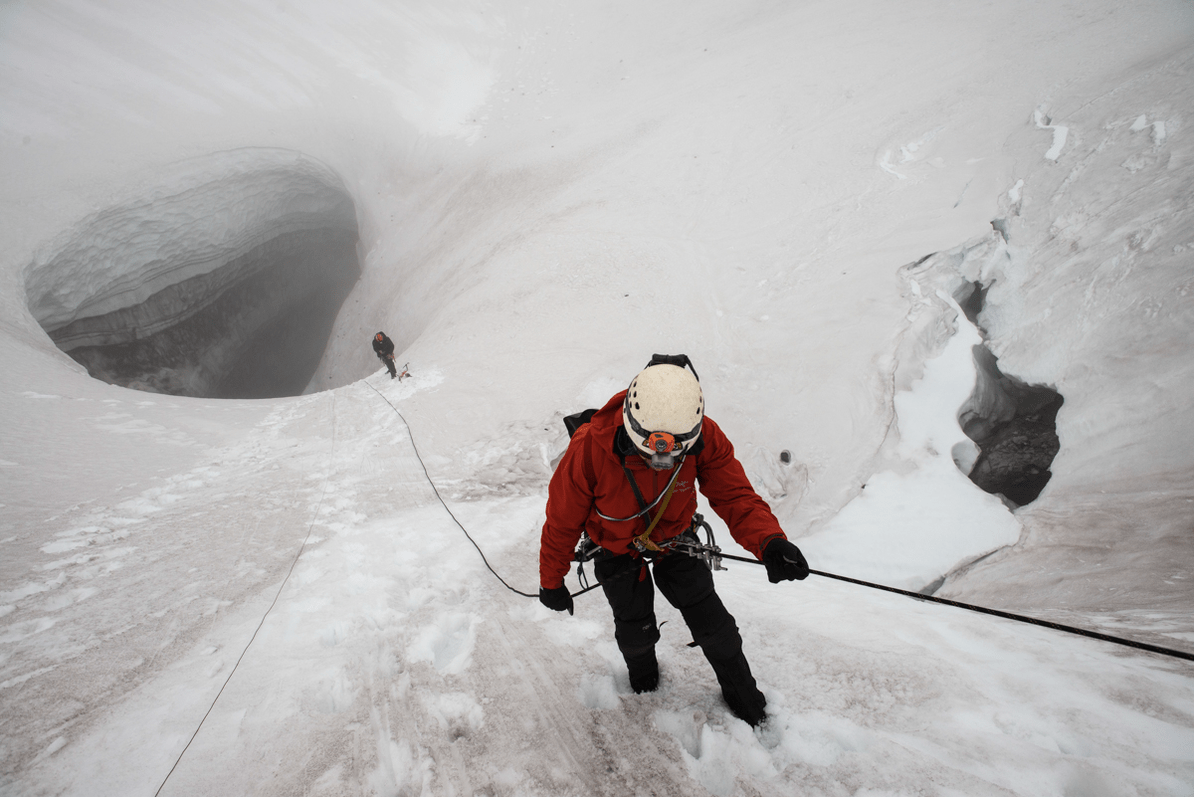
Team surveyor and scientist Neil Marchington lowers himself over a crevasse and toward the gaping mouth of Godzilla Hole below. Local guide and Underground Rescue Leader Jared Smith waits at the cave lip to ensure Marchington and the rest of the survey team descends safely down the 40-foot rappel to the cave floor.
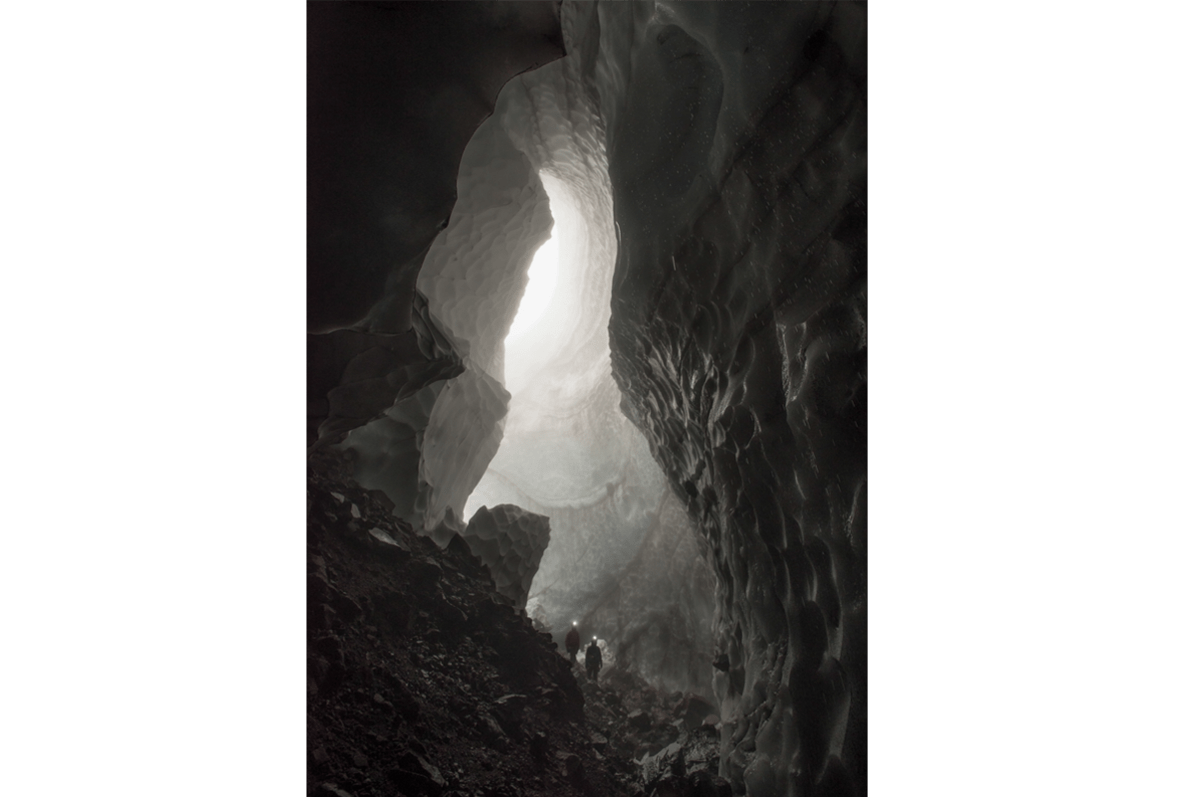
The vertical orientation of a steam vent cave is immediately apparent and surprisingly different from other glacier cave systems. Normally a rushing river flows along the cave floor, but this particular structure harbors no flowing water, only the occasional blast of warm geothermal steam beneath one's feet that creates the towering walls overhead. In his debrief of the expedition, team leader Eddy Cartaya noted that "The main room and initial passage was later measured over 75 feet high, with other portions too high for the laser to hit but easily pushing 100 feet."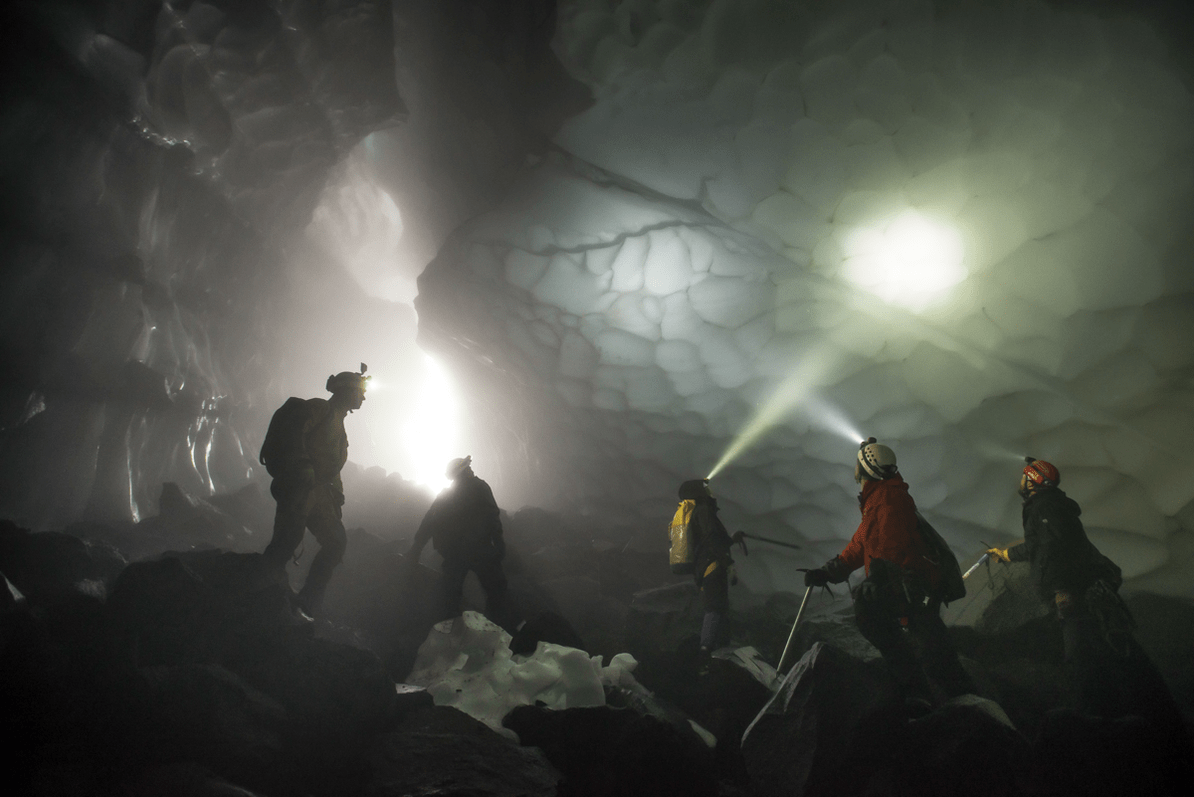
The survey team discovered over 1,000 feet of new cave passages and was constantly on the lookout for anything out of the ordinary. Here the team takes in the sculpted walls of a newly discovered room on the east flank of East Crater Glacier. 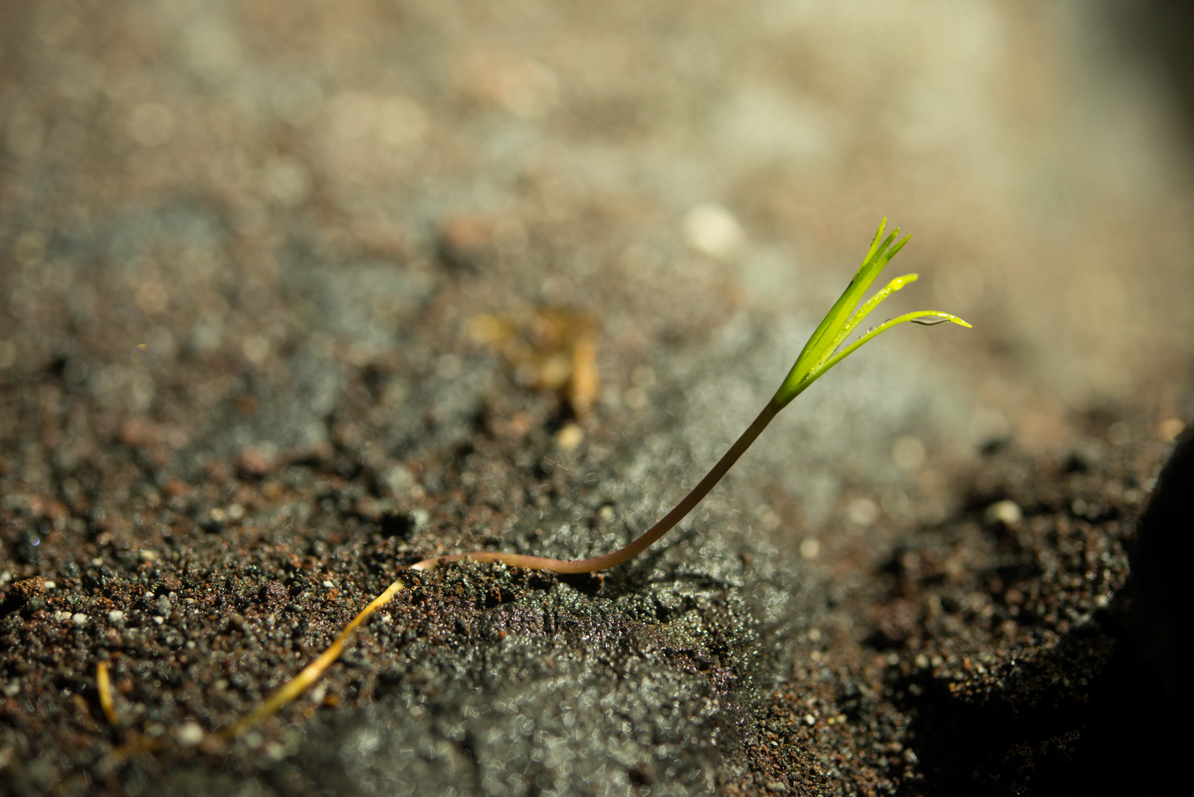
Over a hundred feet from the photosynthetic glow of the cave entrance this conifer seedling was found clinging to life on the volcanic soil of the cave floor. Perhaps stored energy within the seed allowed it to germinate, but growth beyond this stage is unlikely. Due to the fact that there were no trees on the rim before or after the blast, it will be fascinating to get the results of what species this represents and whether trace gases helped it cling to life in the darkness of the cave.
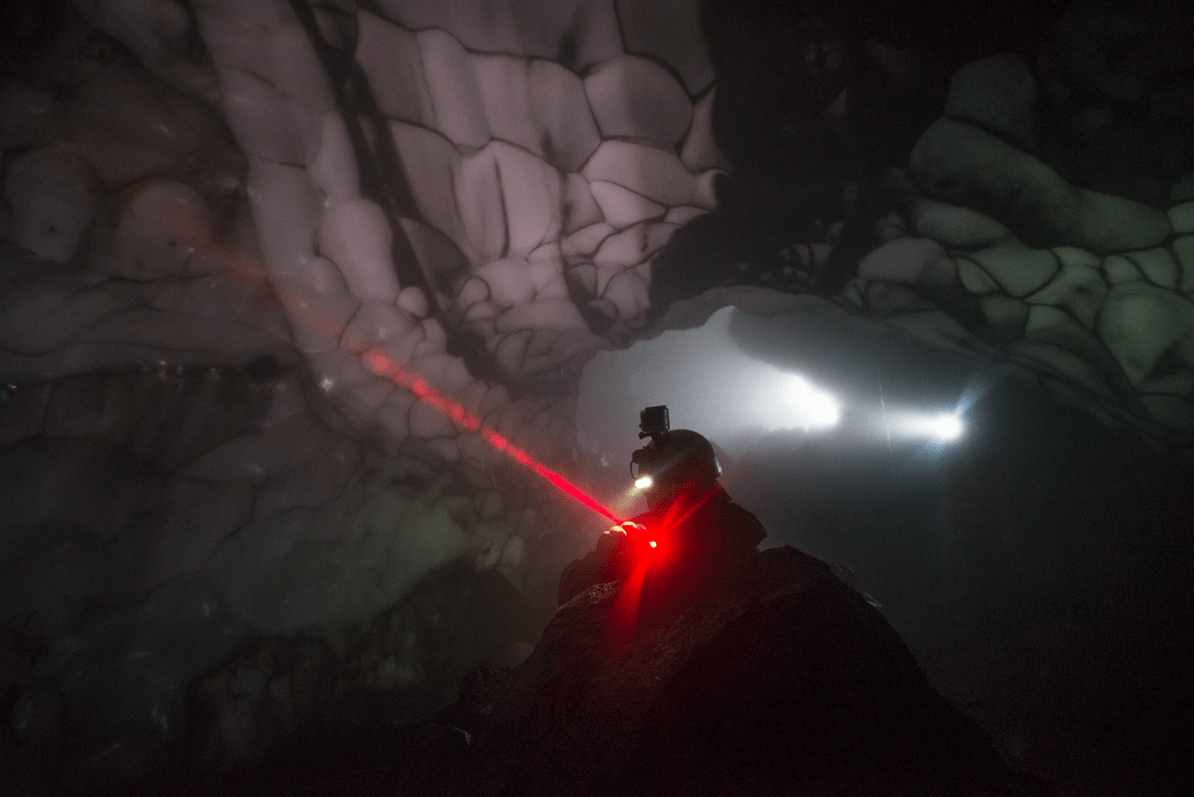
A disto is one of the instruments used in the accurate measuring and mapping of a cave system, be it rock or ice. Here Cartaya shoots a sighting down a newly discovered cave at one of its associated stations. To get an accurate 3-D representation of the cave, a disto is fired up, down, left, and right to establish a distance in all directions while a compass bearing and inclinometer fill in directional and slope specifics.
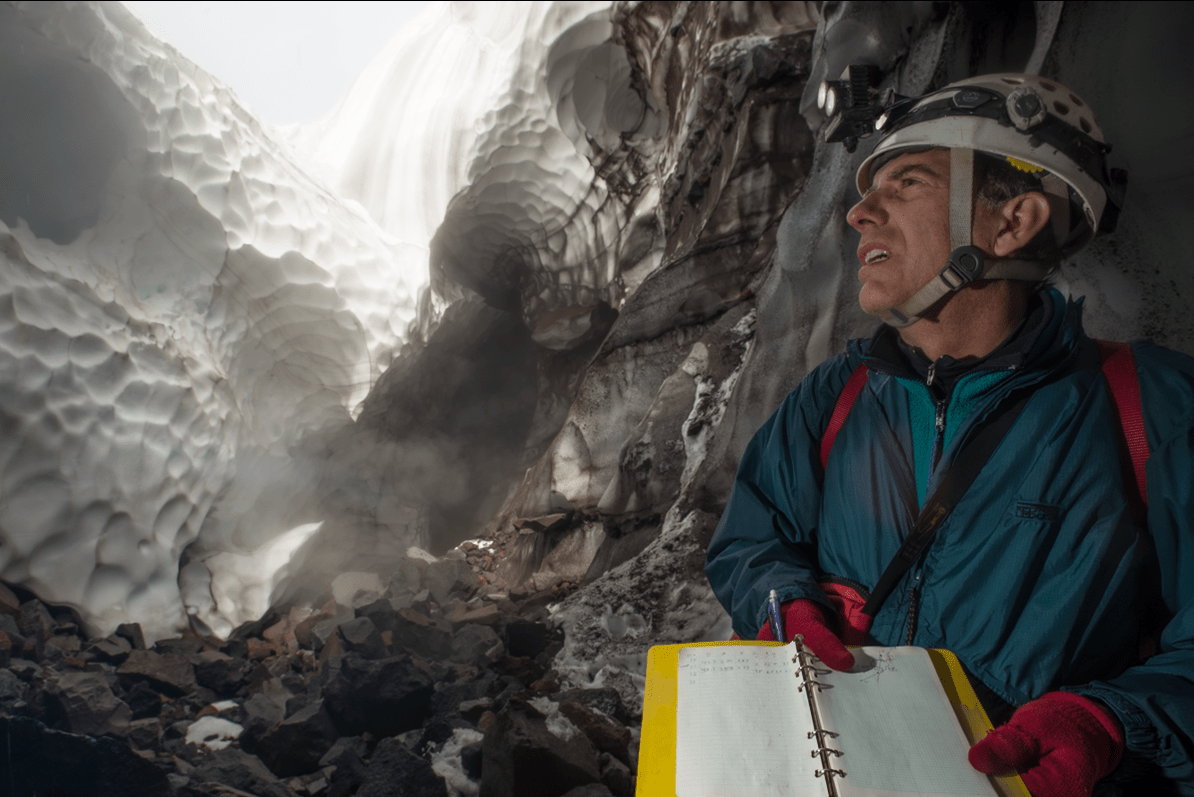
Hydrothermal gas rises behind Scott Linn, Expedition Survey Leader, while he waits for a reading during the initial survey of the eastern flank of the East Crater Glacier. About 833 feet of unnamed cave was mapped and surveyed, and a grand total of 1,412 feet were measured over the entire expedition. Here Linn sketches in the fine details of the cave to be added in the final version of the map.
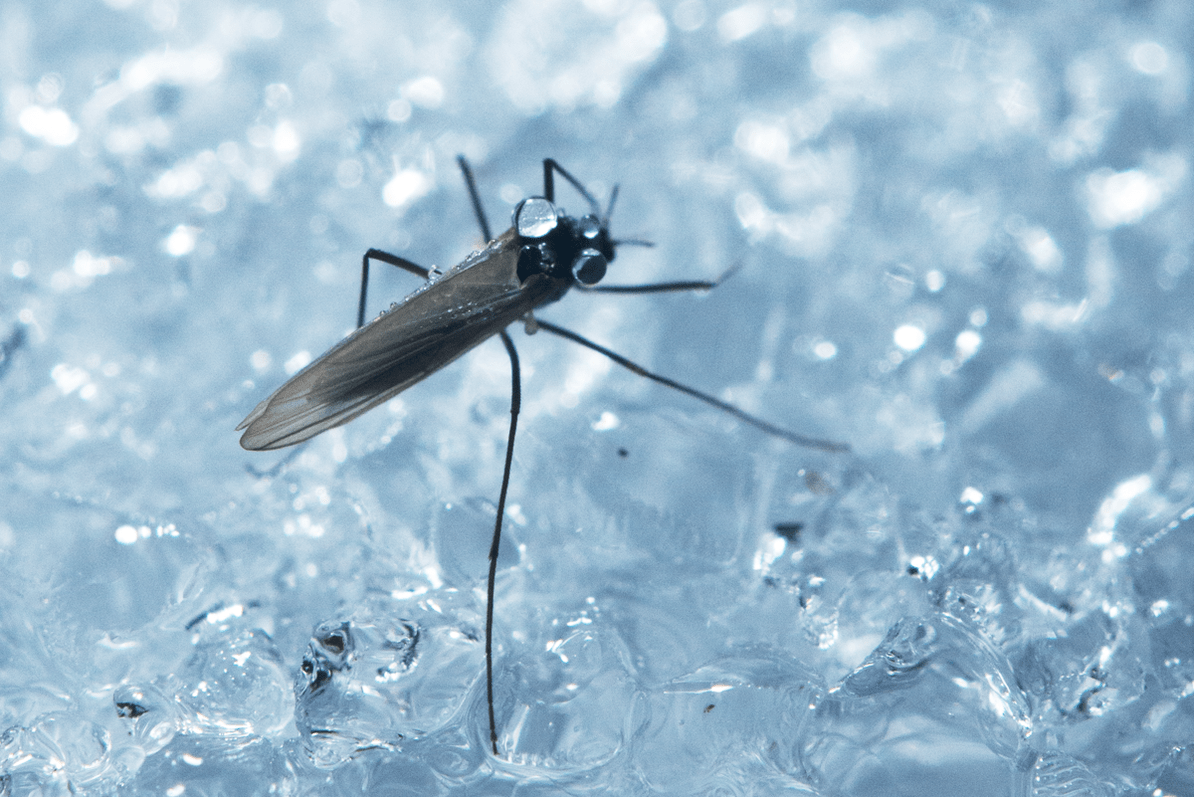
Despite the human, wildlife, and habitat destruction that came in the wake of the St. Helens blast, a new wave of life has already begun to reemerge, even in the depths of the crater itself. This unidentified insect was found in profusion on the surface of the glacier cave walls, seemingly immune to the freezing temperatures. Samples will hopefully reveal its species of origin and potentially shed light on how this and other life forms can survive in such a hostile environment.
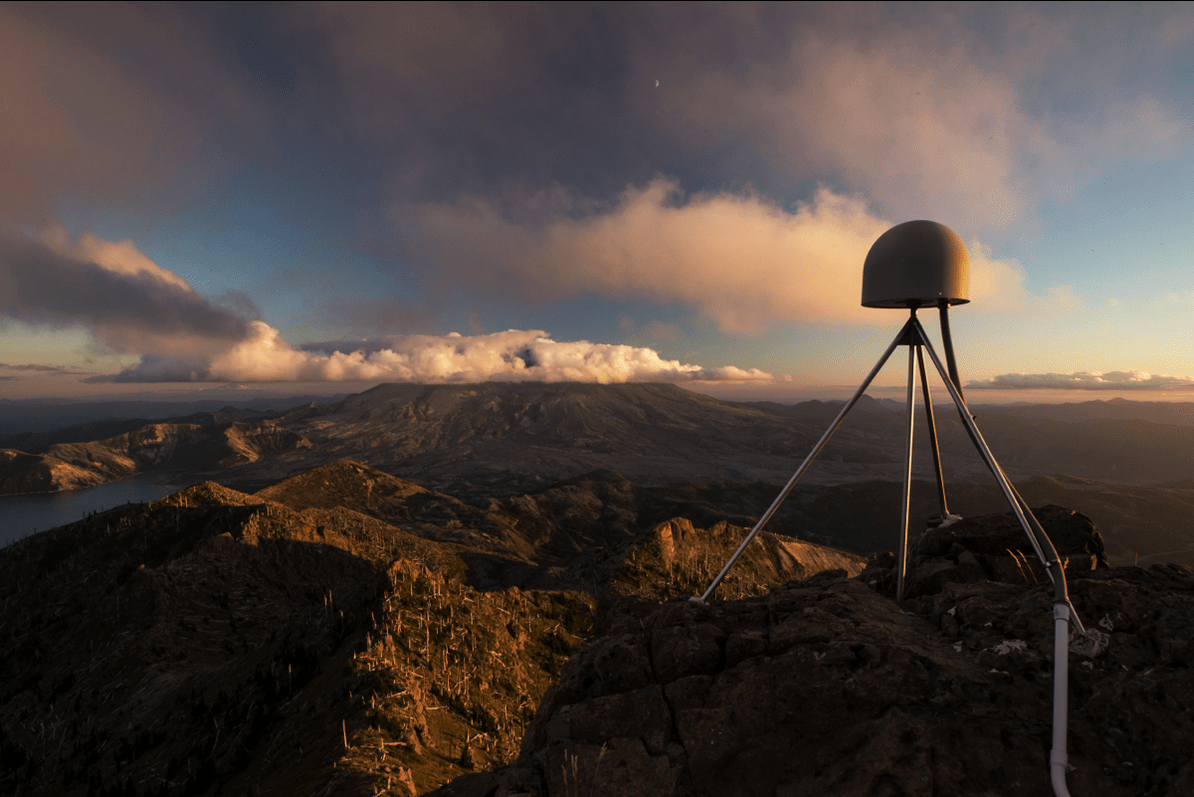
Scientists have been keeping a close eye on Mount St. Helens since the 1980 blast and its most recent lava dome growth in 2004 and 2005. The presence of one of the planet's only growing glaciers in this volatile environment triggers flashbacks to the destructive mud flows that came with the mountain loosing 70% of its ice during the initial eruption. If effective early warning systems are in place, including the annual mapping of the Crater Glacier's caves, perhaps lives down stream can be spared in the event of another large blast of glacier-melting heat.
Heavy sediment loads have become one of the unexpected hazards of the eruption. So much sediment filtered downstream of Helens that sections of the Columbia River over 50 miles away had to be dredged to resume shipping operations in the years after 1980. The process of erosion continues today and has been mitigated primarily with the construction of a sediment dam along the North Fork of the Toutle River, the primary outflow of the Crater Glacier's runoff.
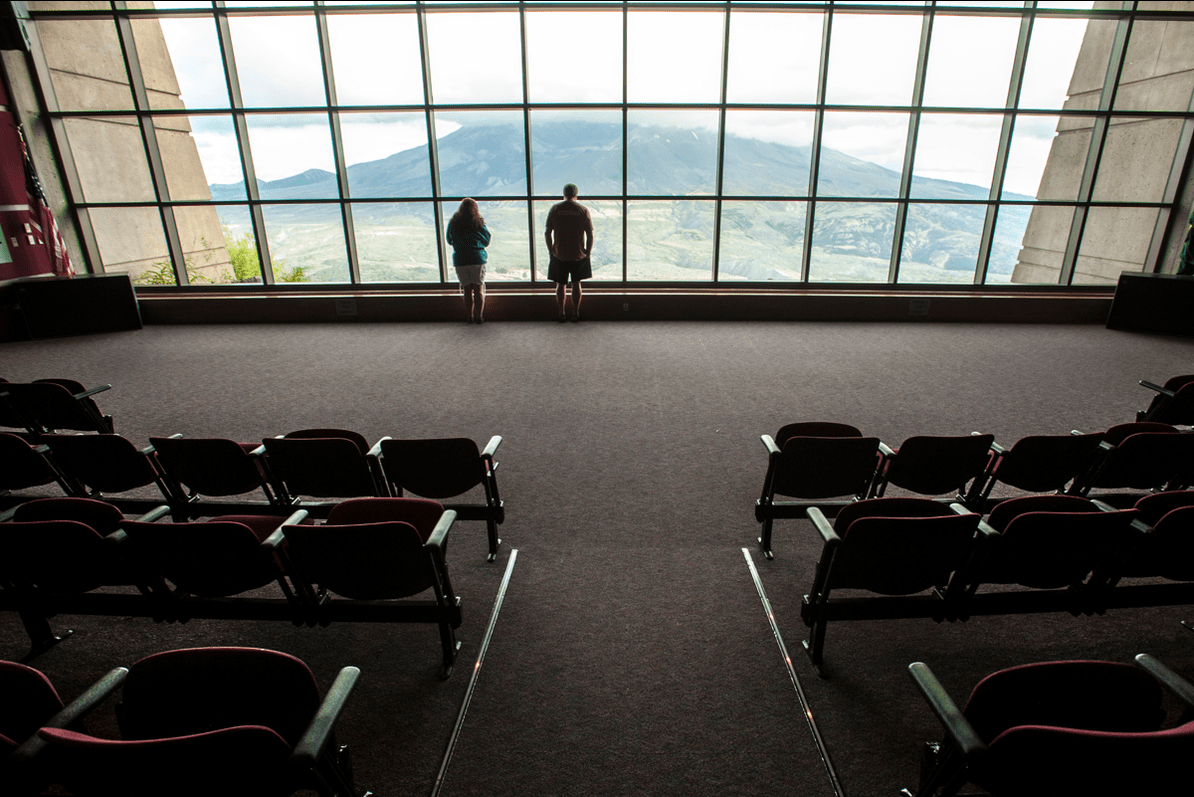
At the Johnston Ridge Observatory, visitors are given a thorough history of the volcano, the lives it took, and the impacts it had on and pose to the landscape and future generations. With continued monitoring efforts and public outreach, the incredible growth of the new lava dome and Crater Glacier will remain a source of pride and fascination instead of something to fear.

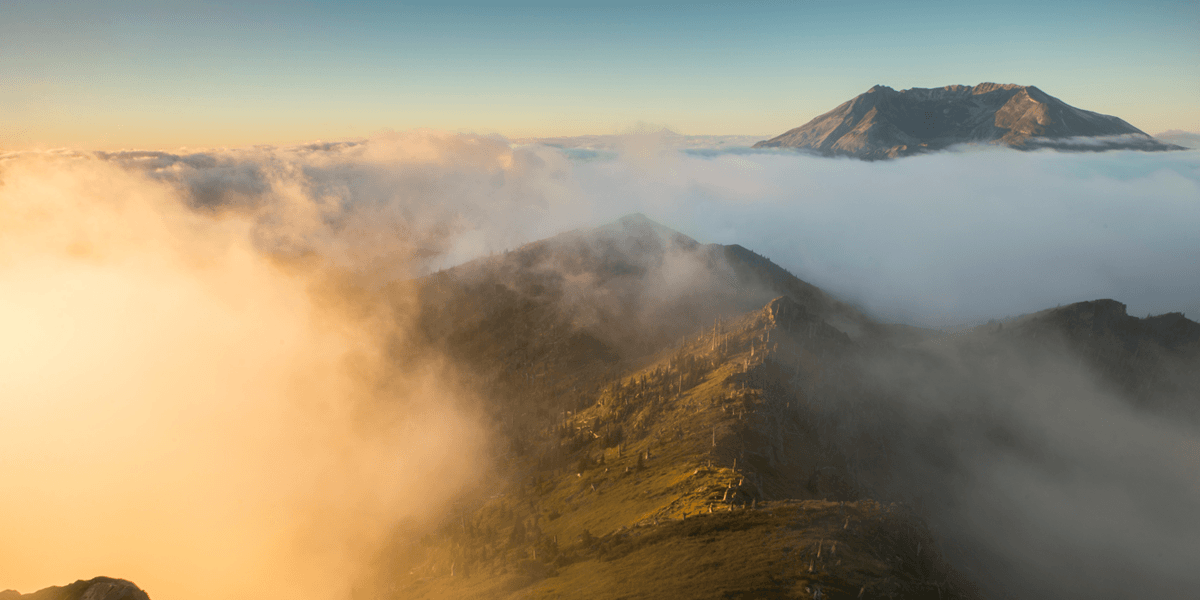



Comments
Sign In and share them.